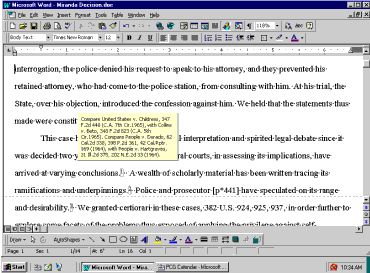

Remember, too, that you can format the style of your endnote/footnote as discussed in the Modifying a Style section. See Adding Page Numbers for more information on creating sections. To do this, each chapter will need to be its own section.

You can have your footnotes and endnotes restart their numbering in each chapter.
 To adjust the settings of your footnote, including the numbering style, when to start and stop the numbering of your notes, etc., click on the Expand icon in the Footnotes Group of the References Ribbon. On the References Ribbon, in the Footnotes Group, click either the Insert Footnote or Insert Endnote icon. Put your cursor where you want to insert your new footnote or endnote. On the References tab, select Insert Footnote or Insert Endnote. Click where you want to reference to the footnote or endnote. A number or symbol on the footnote or endnote matches up with a reference mark in the document. However, you’ll want to pick one method: EndNote, RefWorks or manual citation for the entire dissertation, or you may end up with more than one bibliography. Footnotes appear at the bottom of the page and endnotes come at the end of the document. They will automatically format both in-text citations and works-cited lists. Use these programs to store your citations and insert them into Word. You can use the method below, or you may want to explore the use of EndNote or RefWorks. You can insert footnotes or endnotes as needed into your dissertation.
To adjust the settings of your footnote, including the numbering style, when to start and stop the numbering of your notes, etc., click on the Expand icon in the Footnotes Group of the References Ribbon. On the References Ribbon, in the Footnotes Group, click either the Insert Footnote or Insert Endnote icon. Put your cursor where you want to insert your new footnote or endnote. On the References tab, select Insert Footnote or Insert Endnote. Click where you want to reference to the footnote or endnote. A number or symbol on the footnote or endnote matches up with a reference mark in the document. However, you’ll want to pick one method: EndNote, RefWorks or manual citation for the entire dissertation, or you may end up with more than one bibliography. Footnotes appear at the bottom of the page and endnotes come at the end of the document. They will automatically format both in-text citations and works-cited lists. Use these programs to store your citations and insert them into Word. You can use the method below, or you may want to explore the use of EndNote or RefWorks. You can insert footnotes or endnotes as needed into your dissertation.







 0 kommentar(er)
0 kommentar(er)
